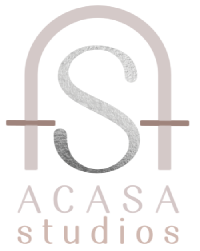As we move deeper into 2025, companies are increasingly reevaluating their office designs to foster productivity, creativity, and employee well-being. One of the most debated aspects of office design remains the choice between open and closed office layouts. Both styles offer unique benefits and challenges, and deciding which works best depends on a variety of factors, including company culture, industry demands, and evolving work trends. Let’s break it down to help you make the most informed decision for your workplace.
The Rise of Open Office Layouts
Open office layouts have been a popular choice for over a decade, with companies like Google and Facebook championing the concept. The idea is simple: tear down physical barriers to promote collaboration, transparency, and a sense of community.
In an open office, employees work in shared spaces with minimal partitions. This setup can enhance teamwork, streamline communication, and create a dynamic, energetic atmosphere. For creative industries or teams that rely on constant interaction, an open layout can be a catalyst for innovation.
However, this design isn’t without its drawbacks. The lack of privacy can lead to distractions and decreased focus, especially for tasks that require deep concentration. In 2025, many companies are addressing this by incorporating hybrid solutions—designing open spaces alongside soundproof pods or quiet zones for focused work.
The Case for Closed Office Layouts
Closed office layouts, where employees have individual offices or work in small, enclosed rooms, offer a stark contrast to the open concept. This design provides enhanced privacy, fewer distractions, and a quieter work environment, making it ideal for roles that demand intense concentration or confidentiality.
In sectors like law, finance, or research, closed offices remain a staple. Employees can hold private meetings, take client calls without disruption, and immerse themselves in complex tasks. The trade-off, however, is that closed layouts can sometimes hinder spontaneous collaboration and create a sense of isolation.
Yet, companies are evolving the closed-office model in 2025. Modern designs often include glass walls to maintain visibility and a sense of openness while preserving acoustic privacy. Flexible scheduling, where employees can choose between private offices and shared spaces, is also gaining traction.
The Hybrid Solution: Best of Both Worlds?
As the workplace continues to evolve, many organizations are opting for hybrid office designs that blend the best elements of both open and closed layouts. These hybrid spaces might feature open areas for team projects, breakout rooms for brainstorming sessions, and enclosed offices or pods for focused work.
The hybrid approach acknowledges that different tasks and different personalities require different environments. Extroverted team members might thrive in a bustling open space, while introverts may prefer quieter settings to do their best work. By offering a variety of workspaces, companies can cater to diverse employee needs and boost overall satisfaction.
What Are the Key Considerations for 2025?
When choosing an office layout in 2025, it’s essential to consider:
Workforce Preferences
Conduct surveys or feedback sessions to understand what your employees value most in their work environment.
Technology Integration
Ensure the layout supports seamless tech use, from video conferencing setups to virtual collaboration tools.
Wellness and Ergonomics
Prioritize natural light, comfortable seating, and designated relaxation zones to promote well-being.
Scalability and Flexibility
Design spaces that can easily adapt to growth or changing work patterns, especially with the continued rise of hybrid and remote work models.
Conclusion: Crafting a Tailored Workplace
Ultimately, the best office layout in 2025 isn’t a one-size-fits-all solution. The most successful companies are those that carefully assess their team dynamics, work requirements, and future goals to design a space that supports both productivity and employee happiness. Whether open, closed, or hybrid, the key is to create an environment where people feel empowered to do their best work.
So, as you rethink your office design, remember, that the ideal layout is the one that aligns with your organization’s unique culture and vision for the future. And with thoughtful planning, your office can become more than just a place to work; it can be a thriving hub of creativity, collaboration, and innovation.
